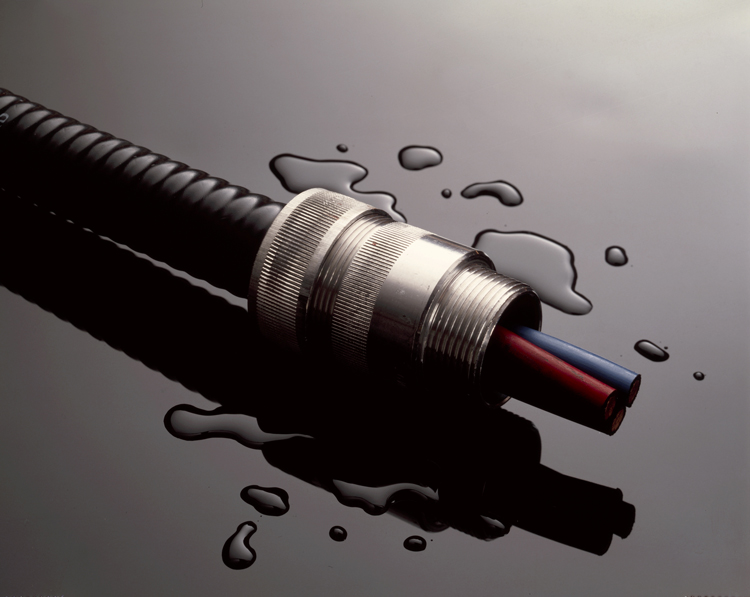 A common misconception is that all jacketed cables are water-resistant by default. The fact is that while an outer jacket adds some protection against moisture reaching internal conductors, it does not make them waterproof. That’s why understanding the environmental conditions wire and cable will be exposed to is among several of the key factors to consider during the design and construction of your wire and cable solution.
A common misconception is that all jacketed cables are water-resistant by default. The fact is that while an outer jacket adds some protection against moisture reaching internal conductors, it does not make them waterproof. That’s why understanding the environmental conditions wire and cable will be exposed to is among several of the key factors to consider during the design and construction of your wire and cable solution.
Depending on the frequency and exposure to moisture, the appropriate level of water resistance can be achieved through the careful selection of both materials and the specific construction of your wire and cable. For example, in cases where a cable is occasionally exposed to moisture, using Polyethylene (PE) instead of Polyvinyl Chloride (PVC) may be enough to avoid cable degradation. However, in instances where a cable is expected to sit in standing water for indefinite periods of time or is intended for use in aquatic applications, a more robust water-resistant solution may be required.
Water blocking technology is an approach through which additional material (tape or a gel) is added to a cable’s construction to fill the interstitial areas. When used with suitable connectors and proper termination, water blocking can be effective in mitigating water and moisture. Mercury Wire offers two water blocking technologies. These include dry water blocking and gel water blocking. Here’s how they work:
Dry water blocking
Dry water blocking involves the use of special tapes that are carefully wrapped around the cables internal component and sits right beneath the cable’s outer jacket. If the outer jacket is punctured, the tape’s absorbent side will expand upon contact with the water and fill the puncture site – thereby helping to block water from seeping into the cable. The tapes themselves are typically treated with chemical technology that causes the water absorbed to gel or solidify, which make them less likely to migrate. Using dry water-blocking technology has been estimated double or triple the lifespan of a cable used in wet environments. Mercury Wire recommends the use of dry water-blocking for high moisture environments where the cable is not continuously exposed to water.
Gel filled water blocking
Gel water blocking involves the careful application of water-repelling gel to a cable’s shield to help stop the longitudinal migration of water. During the manufacturing process, the gel is carefully applied to fill-in gaps within the cables internal conductors. Once the final, outer jacket is applied, and having filled-in all internal gaps, the migration of water through the cable is less likely. Mercury Wire recommends the use of gel water blocking technology as part of a comprehensive design including proper termination and selection of suitable connectors.
Consider water blocking technology under the following conditions:
- Cable will be used outdoors
- Cable will sit in standing water
- Cable will be used in an underwater application
- Cable will be constantly exposed to high-humidity or wet conditions